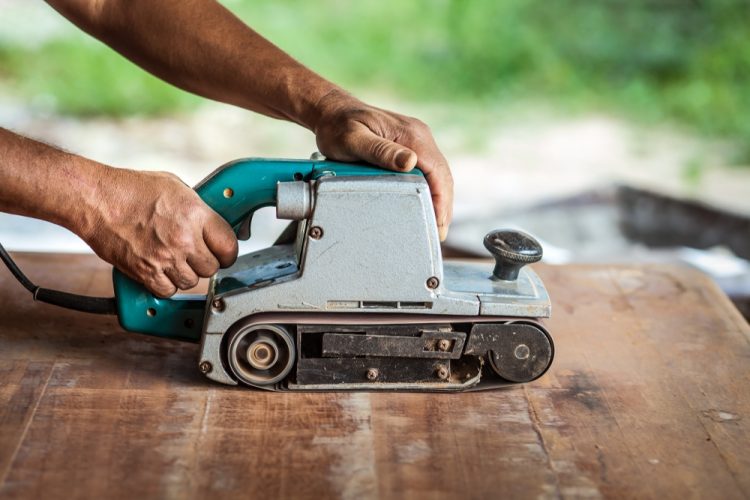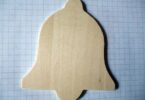Sanding is the part of woodwork that intimidates many people. There are many different sander options available on the market, but which is better? What is the difference between a drum sander and a belt sander? Let us find out.
Drum Sander Vs Belt Sander

1. Features
Drum sanders are typically made in widths of 8 to 12 inches. These sanders can remove much more material with a single pass compared to the belt sander. They use wider sandpaper which must be slid around the drum. This machine is not as portable as a belt sander making it difficult to finish certain areas.
Belt sanders look very much like typical drum sanders. The sandpaper for this sander is different in the way that it can be slipped on and off easily. This is more difficult on a drum sander, where it needs to be clamped down with its locking mechanism. This sander is easier to move around with in its portable form. This allows for sanding in areas that are otherwise hard to get to.
2. Uses
Drum sanders are ideal for any finishes that require heavy-duty sanding. It is suitable for any big surface made of wood. It can work quickly and aggressively making it a great tool for an area that needs to be sanded down many layers. Unlike belt sanders, it leaves behind quite a rough surface and needs to be finished using another type of sander. This sander is difficult to use in comparison to a belt sander and a professional is the ideal user.
Belt sanders are great for any woodwork. It can be used for evening surfaces and removing any stains or cracks in countertops. Unlike a drum sander, this machine can be used for more than just one large surface. Besides that, it is also a suitable tool for unexperienced woodworkers and can be used by any skill level.
3. Working Mechanism
Drum sanders work by moving a loop of sandpaper around the drum continuously. This allows is to rip into wood and remove as much of it as you see fit. Compared to a belt sander, it is easier to make mistakes with a drum sander due to the amount of material it can remove.
Belt sanders works by continuously turning a loop of mounted sandpaper around 2 drums. It is difficult to remove too much material with this sander as it can be easily removed from the surface you are sanding.
4. Pros
Drum sanders are good for large spaces and work can be completed quickly when using this machine. It can remove tough stains and cracks with ease. It can remove a large amount of material in seconds.
Belt sanders are simpler to use when it comes to changing the sandpaper belt. They are more user friendly in the sense that they are portable and can be handheld. They do not require immense woodworking skills to use, unlike drum sanders.
5. Cons
Drum sanders are quite expensive pieces of equipment in comparison to belt sanders. They are also much more difficult to move and are heavier in weight. Unfortunately, only skilled woodworkers can produce the results that you would want to have.
Belt sanders, unlike drum sanders, are not ideal for large areas. They are too small to be used in big spaces efficiently. Although they are not as loud as drum sanders, belt sanders can emit a loud noise which can cause illness in the long run. They can also cause physical damage due to the amount of power they wield.
Comparison Chart
| Criteria | Drum sander | Belt sander |
| Size | Big | Small – medium |
| Weight | Heavier | Light-medium weight |
| Belt size | Wider | Adjustable |
| Belt sliding | Around the drum | Around 2 wheels |
| Portability | Cumbersome to move when the device is not running | Handheld design is easier to move |
| Cutting action | Aggressive | Linear |
| Versatility | One design | Handheld, mounted and benchtop designs |
| Applicability | Heavy- duty finishes | Removal of a sufficient amount of materials |
| Speed | Fast for large areas | |
| Ideal | Professionals and those with enough practice benefit most | DIYers as well as professionals’ benefit from this tool |
| Surface type | Great for flooring | Good for getting into hard to reach areas |
| Noise | Louder | Not as noisy |
Conclusion
Both sanders are great for the jobs that they were made for, so just remember to consider the project at hand. Do not waste your time and effort using the wrong equipment for a job. Never forget to wear protective equipment and practice safe sanding.
FAQs
1. Can you sand floors with a belt sander?
Ans. Yes, belt sanders are required for large areas of floor or in instances where a sanding block is too small to suffice. A sanding block can be used afterwards, however to sand areas that were not reached with the belt sander.
2. In what direction should a belt sander be used?
Ans. A belt sander should be used by moving it backwards and forwards or side to side. You will have more control of the sander if it is moved side to side but backwards and forwards works as well.
3. Is a belt sander better than a drum sander?
Ans. Belt sanders allow for faster changing of the sandpaper belt. Their motors are also more powerful. Unlike belt sanders, drum sanders leave behind ripples meaning the surface needs finish sanding.








